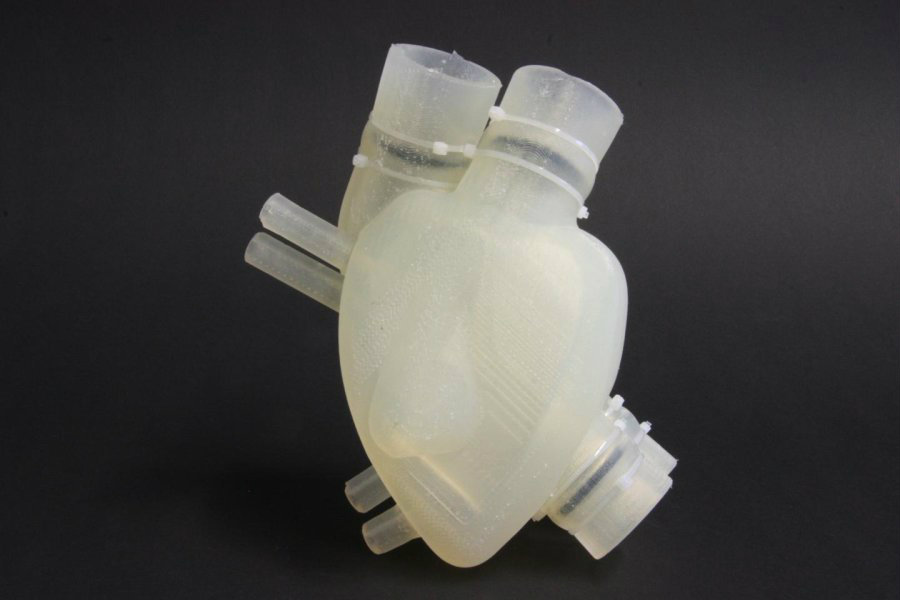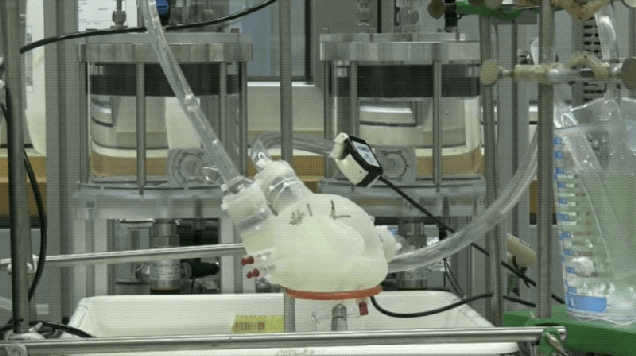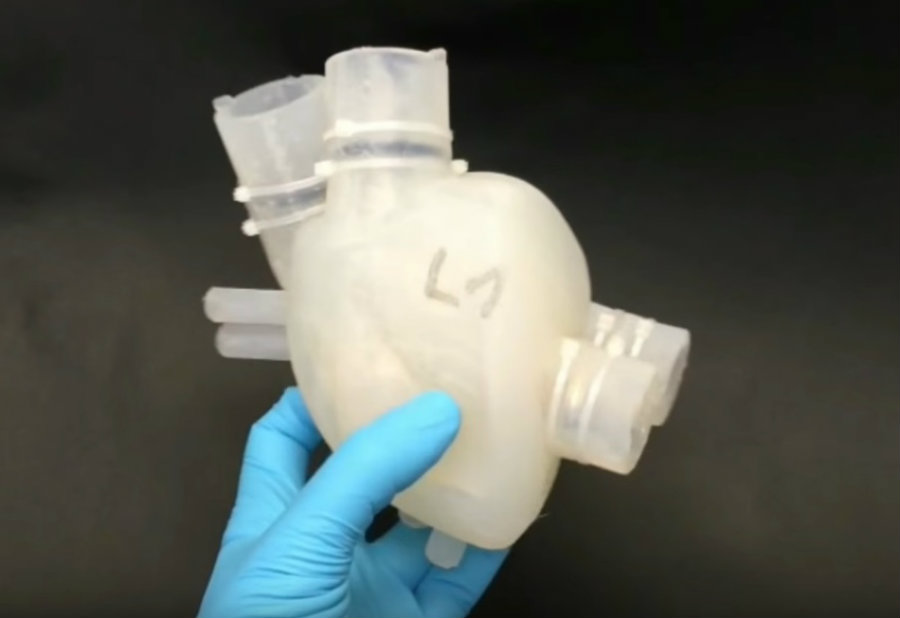A group of Swiss scientists developed a 3D printed soft artificial heart made out of silicon. The heart was developed by Nicholas Cohrs, a doctoral student part of a group led by Wendelin Stark, a professor of functional materials engineering at ETH Zurich. Their findings were published in the scientific journal Artificial Organs.
The soft heart works just like a regular heart, weighs 390 grams, has a volume of 679 cm3 and has a left and right ventricle separated by an additional chamber that inflates and deflates with air pressure, thus mimicking the pump action of the human organ.

The research team is part of the Zurich Heart project, a coalition of researchers from Zurich and Berlin that study the heart to improve existing blood pumps used for patients with heart failure.
Silicon artificial heart developed in Switzerland works very much like a human heart
Current blood pumps have several disadvantages, as their mechanical parts are often susceptible to complications –such as producing infection, mechanical breakdowns, and development of blood clots- while the patient wearing them lacks a physiological pulse, which doctors believe poses some risks for the patient.
“Therefore, our goal is to develop an artificial heart that is roughly the same size as the patient’s own one and which imitates the human heart as closely as possible in form and function,” said Cohrs in a statement from ETH Zurich.
The researchers noted that well-functioning artificial hearts are greatly needed, as over 26 million people around the world suffer from heart failure, and heart donors are usually scarce worldwide. These artificial hearts help to keep patients alive while they wait for an organ donor or until their own hearts recover.
The “squishy” artificial heart was manufactured using a 3D-printing, lost-wax casting method. Cohrs noted that it is a silicone monoblock with a complex inner structure.
Anastasios Petrou, a doctoral student part of the Product Development Group Zurich, led by Professor Mirko Meboldt tested the performance of the squishy artificial heart. They concluded that the heart works and moves very much like a normal human heart.
Researchers will keep working to make the artificial heart last longer
However, the new artificial heart currently lasts for about only 3,000 beats, which means it lasts around 45 minutes.
The material can’t sustain the movement and functioning of the heart longer than 3,000 beats, but researchers said they would continue working to improve the heart.
“This was simply a feasibility test,” said Cohrs. “Our goal was not to present a heart ready for implantation, but to think about a new direction for the development of artificial hearts.”
The Zurich Heart Project focuses on improving existing blood pumps, and some of their efforts include reducing blood damage inflicted by the mechanical parts of the pump and exploring extremely elastic membranes or more biocompatible surfaces to develop these pumps.

Some doctoral students of the Product Development Group Zurich are also currently working on new technologies for artificial hearts, and have successfully developed a testing environment in which they can mimic the human cardiovascular system.
The creators of the new artificial pump used this testing environment to test the efficiency of their simulated organ. In the testing process, they even used a fluid of comparable viscosity as human blood. Petrou noted their system is probably one of the best in the world and stressed his intention of remaining in this research field.
“As a mechanical engineer, I would never have thought that I would ever hold a soft heart in my hands,” said Petrou. “I’m now so fascinated by this research that I would very much like to continue working on the development of artificial hearts.”
Researchers in Sweden developed a miniature human heart using rat heart cells
Earlier this week, it was published a study about a miniature human heart that was developed from a rat’s heart in a laboratory. For this feat, a group of researchers took cells from a rat’s heart, leaving behind its tough skeleton, and seeded it with human cells that started turning into heart cells.
According to the scientists, the invention could revolutionize drug testing, as heart drugs could be tested on the miniature hearts, while at the same time the method could one day make possible for labs to grow human hearts for transplants.
The research team removed a heart from a rat and then employed a technique called 4-Flow cannulation to develop the mini heart. The study was led by Dr. Duong Nguyen, who works in Swedish pharmaceutical company AstraZeneca in Gothenburg.
Nguyen noted the development of humanized miniature organs through decellularization of rodent organs and recellularization with human cells would provide higher quality evidence for the creation of living models.
Scientists have also shared plans to one day take an animal heart, most likely from a pig, remove its cells and then replace them with human cells from a patient’s own body. Such technology would allow for scientists to then build a heart to match a patient’s and transplant it into such patient.
Source: ETH Zurich
